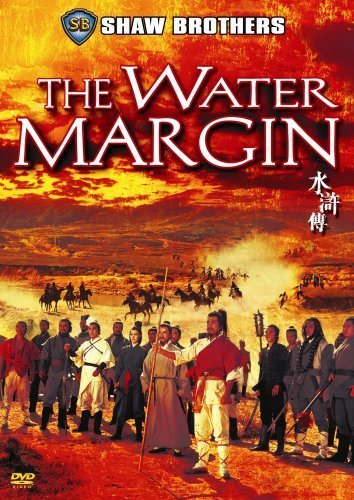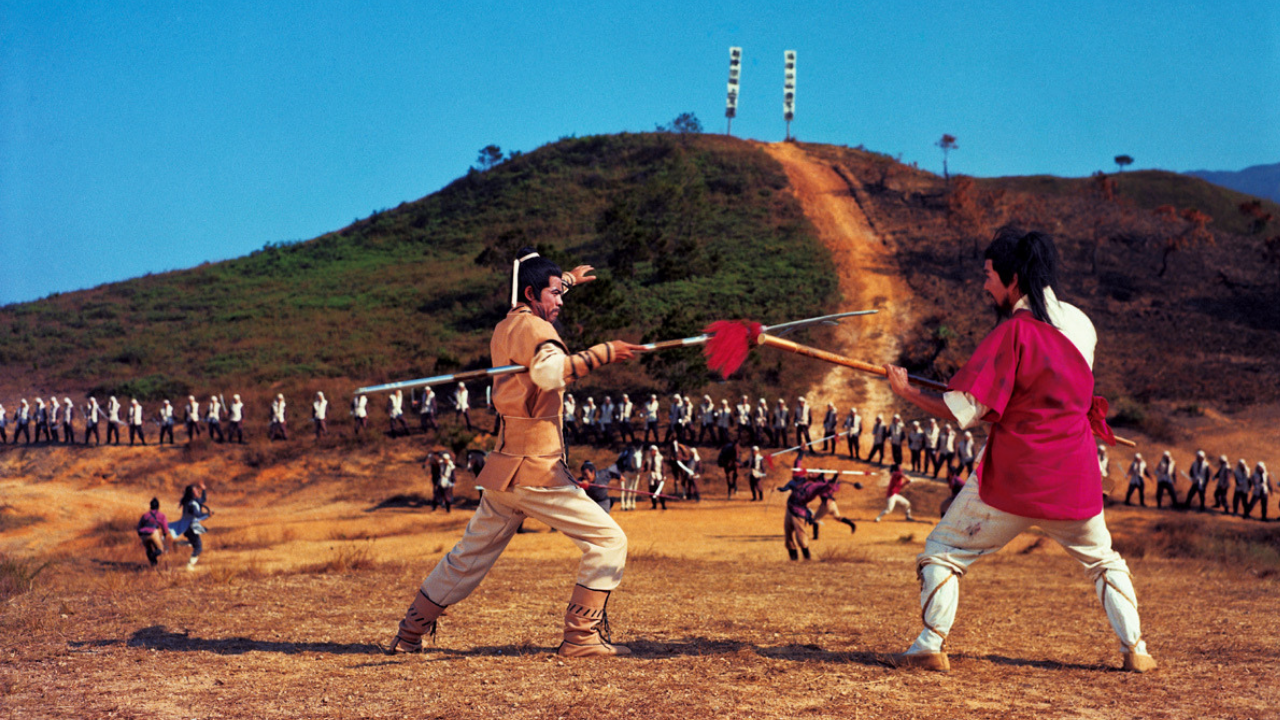
Contents
Water Margin The Novel Plot Summary
A very brief overview of the full novel plot
Norther Song Dynasty
The novel is set in 1126, after the Song Dynasty had lost much of its territory due to the unprepared emperor. The emperor at the time was focused on his own pursuits rather than ruling. The prominence of government corruption was greatly impacting peoples lives.
“To render justice for the heaven and save the people”
The group of bandits comes together to bring justice in the face of unjust officials. The bandits challenge corrupt officials and other oppressive government forces.
Liangshan Marsh
In the novel, a group of 108 outlaws set up a stronghold in a fictional location called the “Liangshan Marsh”. The outlaws come from all different walks of life, with each character bringing unique backstories and motivations behind their choices.
Rise to Power and Reintegration
The bandits holding government figures accountable leads to a significant growth in the bandits’ political power. The bandits continue on their justice journey until the conclusion of the novel when the bandits are offered amnesty and governmental positions.
What the film covers:
Water Margin by the Shaw Brothers covers one of the more notable 4 chapters of the original novel, chapters 64 through 68. The plot covers how the “Jade Unicorn” Lu Junyi became one of the bandits.
The film starts with an ambush by Shi Wengong on the leader of the bandits, Chao Gai, which ends up killing him. The two bandits that end up as the leaders of the Bandits, Song Jiang and Wu Yong, decide to try and avenge Chao Gai’s death. To properly avenge Chao Gai’s death, they need a skilled martial artist, so they seek out Lu Junyi, who is the former student of Shi Wengong, and his servant Yan Qing.
To seek out Lu Junyi, Wu Yong, disguises himself as a fortune teller and sneaks into the Northern Capital with his assistant Li Kui. Wu Yong, maintaining his fortune teller guise, tells Lu Junyi he must travel southeast to avoid personal tragedy. Yan Qing can see through the fortune teller’s disguise and the pair’s fight, with Wu Yong and Li Kui handily losing. Wu Yong managed to talk Lu Junyi into releasing them, but their presence in the capital was reported to the authorities by Li Gu, who also happens to be having an affair with Lu Junyi’s wife. Li Gu reports the bandits and their release as a way to frame Lu Junyi and steal his money. Lu Junyi’s assistant, Yan Qing, then embarks on a journey to try and free Lu Junyi. Along the way, he meets another bandit, Shi Xiu, who also tries to free Lu Junyi. Eventually, Yan Qing gathers a large group of Liangshan bandits, and through well-planned strategic attacks, can free Lu Junyi. Lu Junyi then kill the man who was sleeping with his wife, and his assistant kills his wife.
The outlaws then leave the northern capital, and upon their exit, run into She Wengong. There is a large final battle scene which leaves She Wengong gravely injured. Upon seeing Lu Junyi as the new leader of the Liangshan bandits, She Wengong commits suicide, and the bandits return to their stronghold.
Character List:

- Lu Junyi (Talent martial artist the bandits are trying to recruit)
- Yan Qing (Servant or student of Lu Yunji)
- Chao Gai (Former leader of the Bandits)
- Shi Wengong (Villain)
- Song Jiang (Interim leader of Bandits)
- Wu Yong (Interim leader and face fortune teller)
- Li Kui (Wu Yong’s servant)
- Li Gu (Adulator)
- Shi Xiu (Bandit)
- Li Chong (Bandit)
- Hu Sanniang (Bandit)
- Wu Song (Bandit)
Film Review and Analysis:
Without having read the full original novel, the film Water Margin, released by the Shaw Brothers in 1972, is entertaining. While only covering four chapters of the novel, the film feels complete (maybe even a little long). Each character has a distinct personality, almost in a caricature-like sense. The individual traits are emphasized through the character choices and facial expressions. The expressions come across as particularly exaggerated, which can take away from scenes that may otherwise be serious. Despite the goofiness, the larger-than-life personalities are engaging. The film brings the characters’ personalities to the forefront in a way a novel doesn’t quite have to ability to.

A unique feature of the film is the scale. The film has a large cast, using almost all actors employed by the Shaw brothers at the time. Almost all the actors engaged in martial arts choreography. The film starts and ends with a large fight scene that features a series of one-on-one duels. The middle of the film has a series of martial arts fights that are on the scale of ten versus two. The choreography for both types of fight scenes is precise and well portrayed. The film moves through a series of locations, from city to countryside, which adds to the perception of a large world. The film’s scale was unique for the time and created the foundation for future blockbusters.

The number of characters made the beginning of the film confusing for the casual viewer. Many characters are only briefly shown before the plot quickly starts bouncing between characters and locations. The quick dive into the plots helps build a rich storyline, that keeps the viewers attention. The movie emphasizes the journey, rather than the movie being a means to an end. The focus on the story was an innovative idea at the time of production.
Another fascinating aspect of the film is the music and sound effect choices. The sound effects don’t quite make sense with the action scenes, which adds a comedic feeling to the action shots. The music choices also stand out because it’s a unique blend of traditional Chinese sound and Western music. Bringing a more culturally mixed set of music choices changed the sound of the film and gave a modern feel to a classic storyline. The music choices, along with the release by a massive film company, helped spread the Water Margin story beyond China and increased the audience.
The film stays relatively true to the storyline in the novel, which was made possible by the small portion of the text the film was aiming to cover. The do to the feature explained previously, the film takes on a more humorous and entertaining note than the novel and focuses more on entertainment than the messaging of average people fighting a corrupt government. The movie was a good basis to expand upon and build the foundations for future adaptations. The film does a good job of giving all the individual characters personality, which is an important feature of the novel. The director took some creative liberty in building the personalities of the characters through the actor selections and the screenwriting. As one of the earliest film adaptations of Water Margin, the film did a good job of highlighting what could be possible using the stories and characters from the novel.
Other Adaptations of Water Margin:
- (Movie )All Men Are Bothers – Shaw Brothers (Sequel to Water Margin)
- (TV) The Water Margin 1998 – CCTV
- (Video Game) Suikoden 1995 – Konami
What Other viewers had to say:
“I get the feeling that Chang Che just absolutely loves these original books, to the point where he simply cannot adapt them for shit” – threepenny (Letterbox)
“So if you want to see virtually ALL of your early Shaw Brothers favorites in one movie, The Water Margin will treat you right.” – Will (Silver Emulsion Film Reviews)
Brief History of the Shaw Brothers:

The Shaw Brothers were a wildly successful Hong Kong-based Film company. The company was founded in 1920, and initially they were purchasing cinemas. The Shaw Brothers began movie-making in 1925. In 1961 they created the Movietown studio in Hong Kong, which at the time was the biggest privately owned studio. The Show brothers remained prominent filmmakers through the 70s and 80s. Throughout the organization’s time, the Shaw Brothers produced over a thousand films.
The company worked with many prominent actors and directors of the era. The company produced a wide range of genres, but the Shaw Brothers are most widely known for their martial arts action movies. The company was one of the first big-budget action studios, and the company structure served as an example for the now popular style that is Hollywood blockbusters.
References
Anchi Hoh. (2017, July 13). The Story of Water Margin (水滸傳) | 4 Corners of the World: International Collections and Studies at the Library of Congress. Loc.gov. https://blogs.loc.gov/international-collections/2017/07/the-story-of-water-margin-%E6%B0%B4%E6%BB%B8%E5%82%B3/
Shaw Scope: A History of the Shaw Bros. Studio – Harvard Film Archive. (2008, May 30). Harvard Film Archive. https://harvardfilmarchive.org/programs/shaw-scope-a-history-of-the-shaw-bros-studio
The Water Margin (1972). (2025a). Letterboxd.com; Letterboxd. https://letterboxd.com/film/the-water-margin/
The Water Margin (1972). (2025b). IMDb. https://www.imdb.com/title/tt0069265/mediaviewer/rm4294774272/
Where to begin with the Shaw Brothers. (2021, December 21). BFI. https://www.bfi.org.uk/features/where-begin-with-shaw-brothers
Will. (2013, September 13). The Water Margin (1972). Silver Emulsion Film Reviews. https://www.silveremulsion.com/2013/09/13/the-water-margin-1972/

